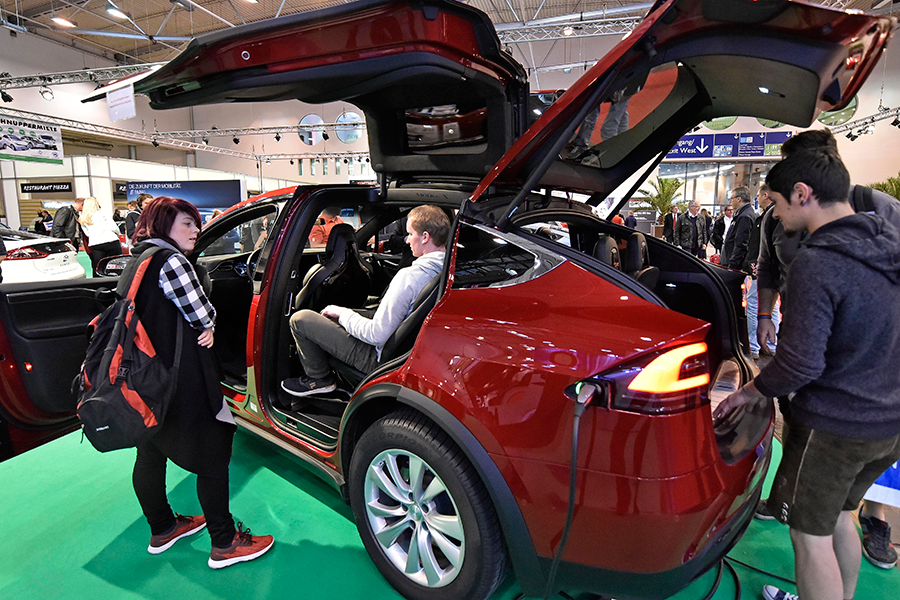Tesla puts brakes on autonomous cars with internal speed limit
Loading...
Tesla is stepping off the gas pedal on its Autopilot feature, with a software update limiting vehicle speeds to the speed limit. Currently, Tesla's Autopilot software helps control braking, parking, and other routine driving functions, allowing drivers to relax a bit while behind the wheel.
Yet one thing Autopilot will not help drivers do is speed, although Tesla once allowed its semi-autonomous vehicles to exceed the speed limit by approximately five miles per hour.
Electrek first reported on Tesla's speed-limiting technology on Thursday.
The speed-limiting software will kick in on roads and non-divided highways, where Teslas will have no choice but stick to the precise speed limit. On freeways, however, Tesla will merely stick to its overall speed limit of 90 miles per hour.
The move may please federal regulators, who have expressed concerns about Tesla's safety features in the past, particularly after a series of crashes occurred while drivers were using the Autopilot feature.
Consumer safety advocates say that Autopilot is deceptively named, and that Tesla should think twice before calling its software by that name while it is only semi-autonomous, as The Christian Science Monitor reported in July:
"We're deeply concerned that consumers are being sold a pile of promises about unproven technology," Laura MacCleery, vice president of consumer policy and mobilization for Consumer Reports, said in the statement. "'Autopilot' can't actually drive the car, yet it allows consumers to have their hands off the steering wheel for minutes at a time."
"Consumers should never be guinea pigs for vehicle safety 'beta' programs," said Ms. MacCleery. "At the same time, regulators urgently need to step up their oversight of cars with these active safety features. NHTSA should insist on expert, independent third-party testing and certification for these features, and issue mandatory safety standards to ensure that they operate safely."
The new software update includes features aimed at easing these concerns, however, with a more aggressive steering wheel warning system that reminders drivers to keep their hands on the wheel, even while Autopilot is engaged.
The auto company is also set to release its Enhanced Autopilot software in 2017. The long-promised software will update Tesla’s existing semi-autonomous driving features, and will include speed matching technology that will help Tesla cars to keep pace with traffic, switch lanes, and exit and merge onto freeways, among other uses.






